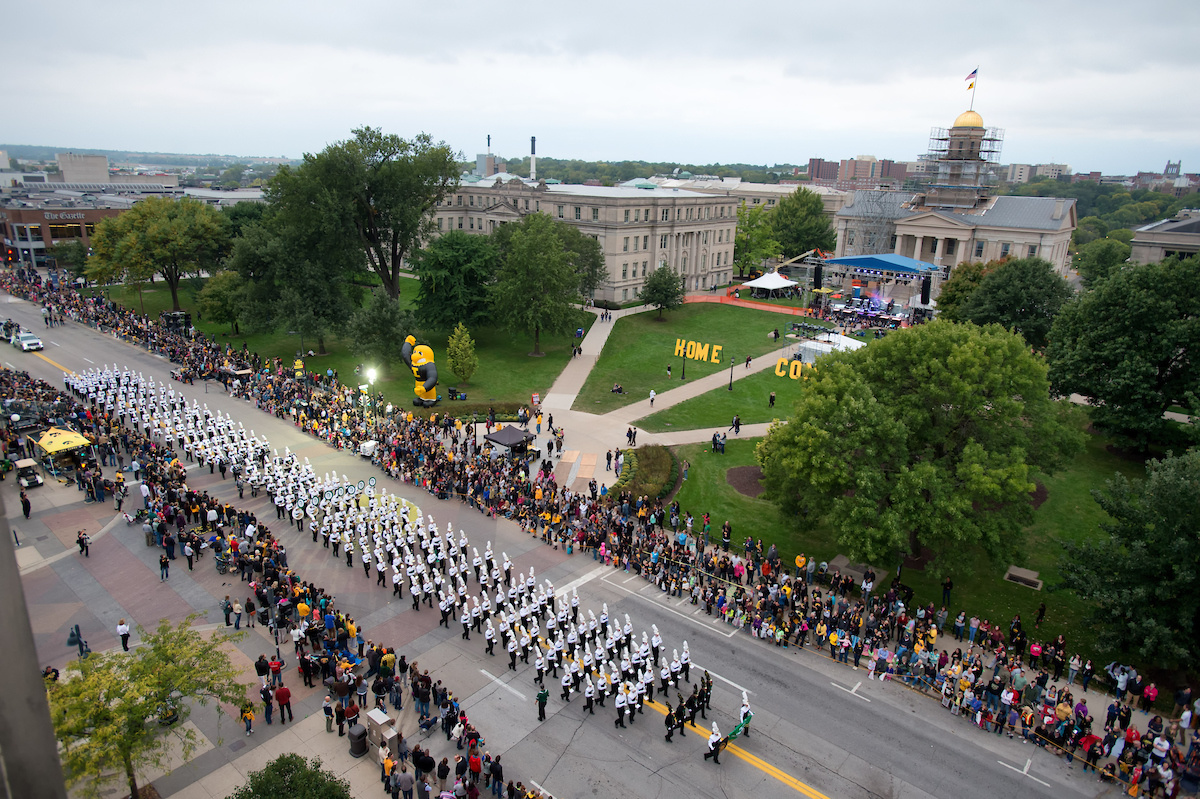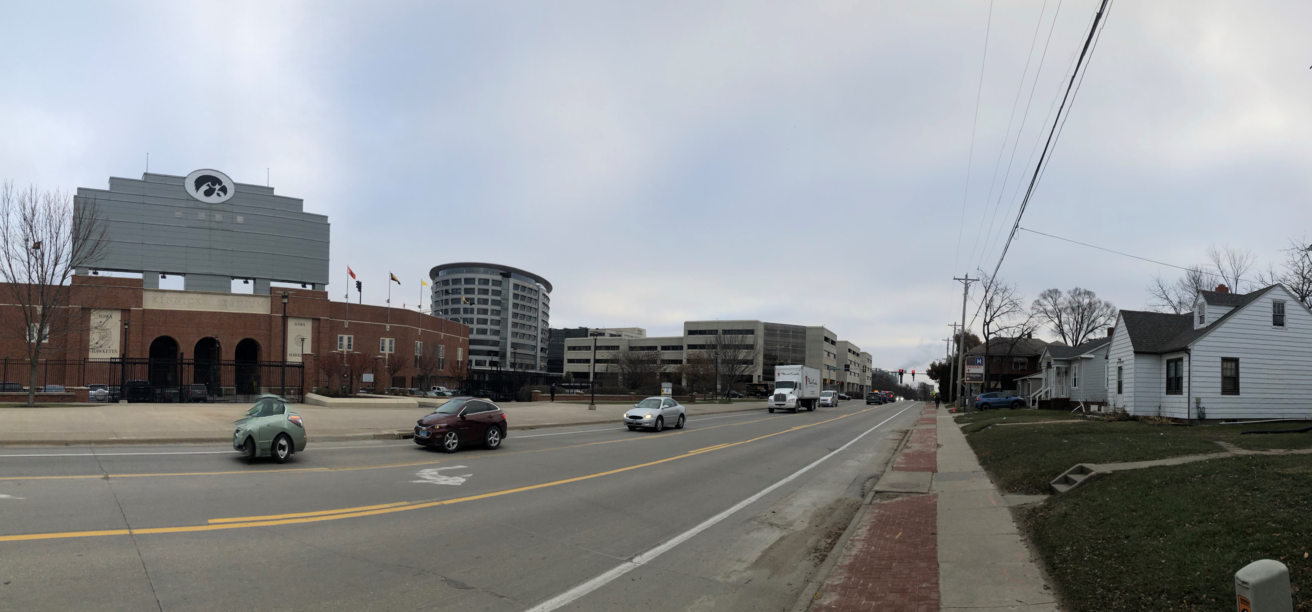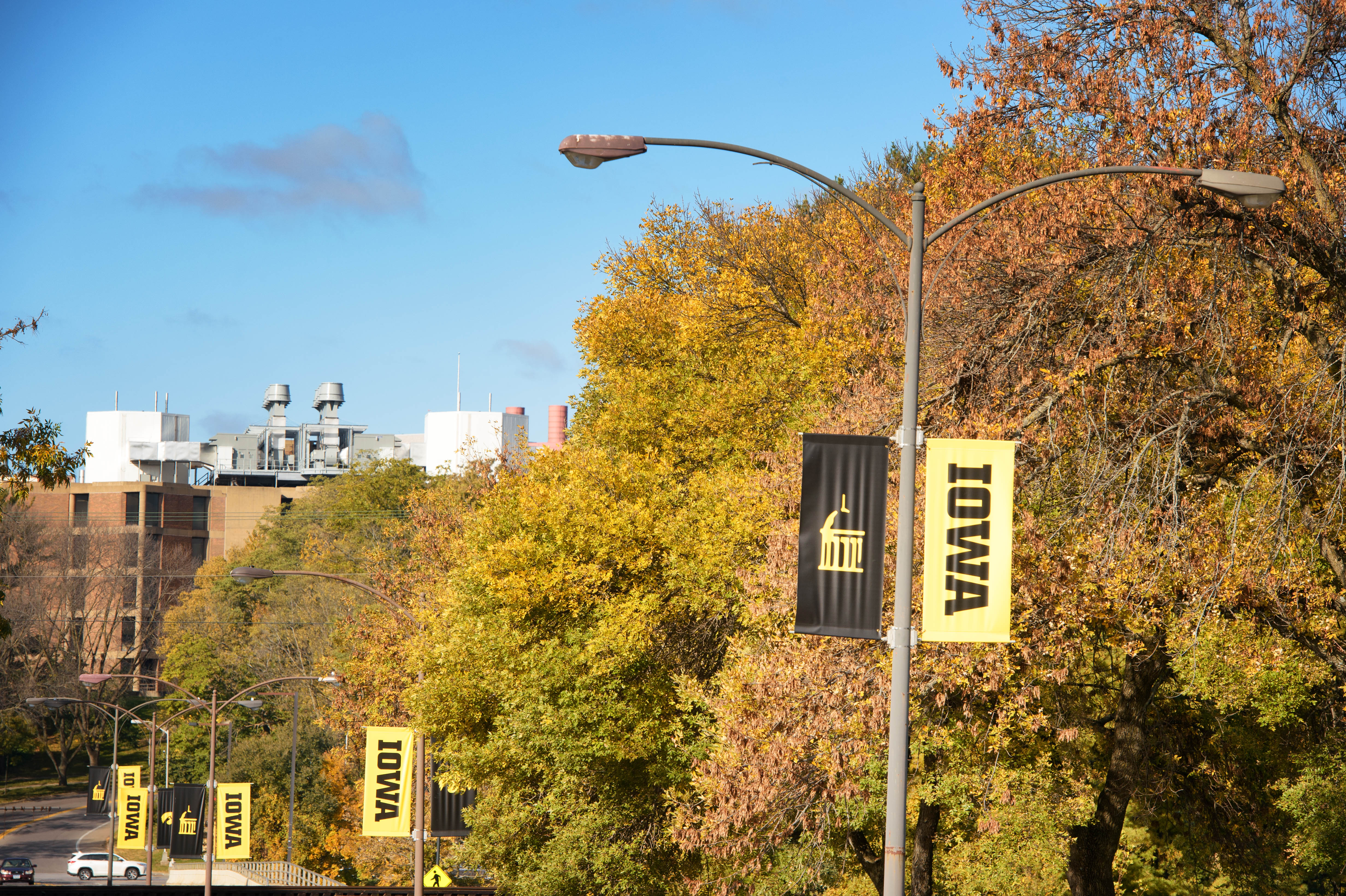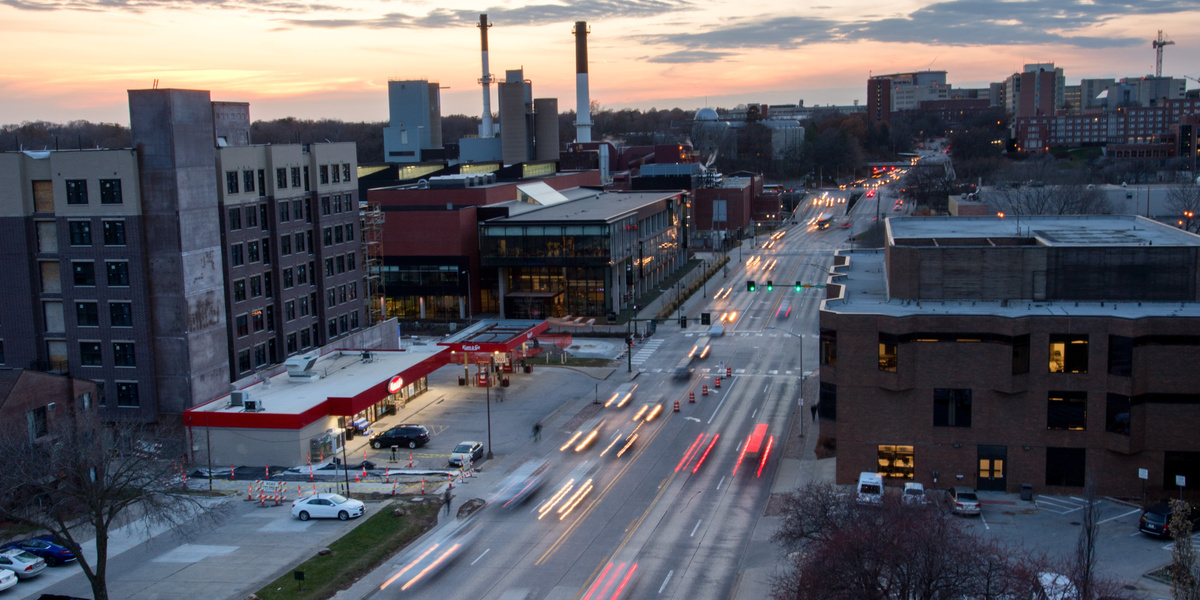The characterization and quality of campus edges and gateways are critical to the success of the University. Typically, a visitor’s impression of the University is formed as they experience the campus landscape and buildings for the first time. Thus, the image conveyed by campus entries and perimeters become indicative of the type and quality of the programs within the campus.
Campus edges create a positive, consistent identity and a sense of campus placemaking. Gateways highlight entry among the edges and serve as the formal transition between campus and the surrounding area, welcoming millions of visitors and users every year.
Goals
- Develop gateways that celebrate arrival to campus and reinforce the qualities of the University of Iowa’s first impression. Coordinate edges and gateways in a way that provide visual clues to clearly identify and improve wayfinding in support of campus vehicular, bikeway, and pedestrian circulation.
- Establish gateway designs, and set appropriate locations which support vehicular, bikeway, and pedestrian movement.
- Gateway landscapes should reflect the materials used in and on iconic structures on the University of Iowa campus (Old Capital, Jessup Hall etc.). Develop a consistent design theme for each gateway to promote University identity while balancing the use of landscape features and scales appropriate to the surrounding environment. Use materials that reflect a classic and timeless appearance while providing durability and compatibility.
- Establish a hierarchy of campus edges which reflect the scale of community balanced by the adjacent circulation system. This includes appropriate building setbacks, landscape plantings (canopies and understories), and application of materials.
- Gateways are to be site sensitive. Use a minimum of two scales of gateways, one supporting a pedestrian scale and another a vehicular.
- Assure pedestrian gateways are purposefully integrated with walkways. Provide opportunity for people to engage and interact with the gateway monument (i.e. photo opportunity, meeting place designation, place to sit).
- Use appropriate lighting to highlight gateway features such as walls, monuments and pathways.
- When possible reinforce the branding of the institution, clearly identify boundaries, promotes scenic views and vistas, embraces the University rich history, and honors its successes.




Strategies
The University of Iowa’s campus has identified seven edge condition types, supplemented by a series of three gateway types. Each edge and gateway has distinct features based upon the context in which it resides.
- Processional Edge – Provide a sense of transition onto the campus. The focus is on the first-time visitor, student, faculty, and staff’s experiences as they enter the University from the surrounding area.
- City/ Urban Edge – Use design elements such as roadways, landscape, architecture and the physical density of the built environment. Edges may be porous in this context.
- Residential Edge – Create a pedestrian scale related to a neighborhood’s sense of community. These edges should be integral to the area, aligning with surrounding scale, landscape and views while still highlighting University identity.
- Cultural Edge– Promote academic outreach by using the arts as orientation to reinforce edges and opportunities for community engagement by opening onto the street and incorporate gathering places.
- Sports & Recreation Edge – Establish a vibrant edge with amenities that echo the functional characteristics of this location. Banners and directional signs reinforce the perimeter and assist visitors with event information and wayfinding.
- Medical Edge – Streetscape enhancements are intended to improve safety and clearly delineate this campus neighborhood while maintaining the image of the University.
- Buffer Edges – This boundary is typically unidentifiable as a campus edge. Functions along this perimeter include railroads, campus support services, and campus infrastructure facilities. The visual character of this edge should rely on a composition of soft edge treatments (trees, berms, native low maintenance plantings) as well as security elements (fences and screens).
- Arrival Gateways – Major entries that are located along primary vehicular routes. These are characterized by a composite of various scales of plant material (trees to ground cover), hardscape (plaza, pathway), University signage, wall, and monuments.
- Urban Gateways – Entries located in the dense metropolitan environments that are more pedestrian oriented. Less emphasis is placed on the surrounding landscape and more emphasis is placed on the University monument.
- Ceremonial Gateways – These entries have a more specific focus such as Athletics, Performing Arts, UIHC (i.e. Kinnick Stadium, Hancher).
Edges and Gateways Maps
Strategies, Goals, and Objectives PDF